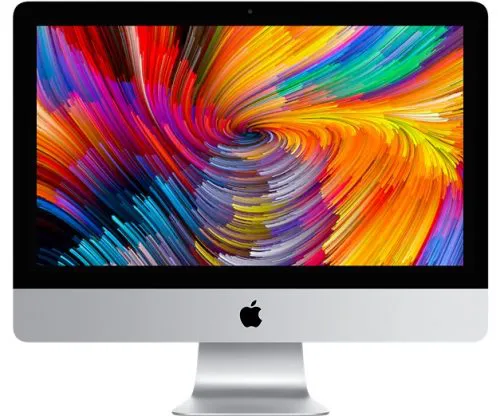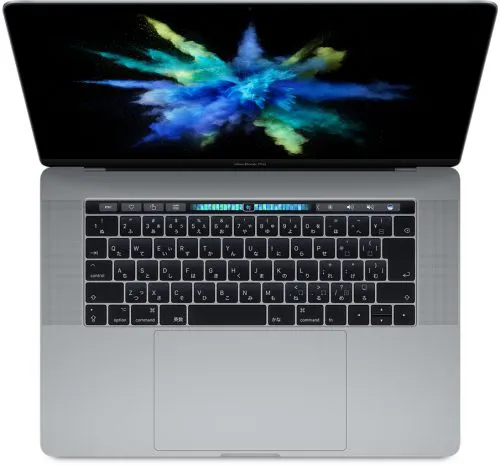One of the challenging aspects of choosing a computer is selecting a laptop for video editing. With the enhancement of editing applications, even beginners can relatively easily edit videos. However, to use editing apps, the computer needs to have the appropriate specifications.
Moreover, there is a wide variety of laptops, and beginners often struggle to decide which one to choose. Therefore, this time, we will introduce laptops suitable for video editing and provide an explanation on how to choose them.

Choosing the Perfect Laptop for Video Editing
Checking the Performance of the CPU
The CPU (Central Processing Unit) is a component that handles various controls in a computer. Currently, two companies, “Intel” and “Advanced Micro Devices (AMD),” are well-known for producing CPUs for computers. Since the CPU directly affects the basic performance of a computer, it’s crucial to check it thoroughly before making a purchase.
You can assess the approximate performance of a CPU based on factors such as the number of cores, threads, and clock frequency. The core count and thread count are often represented as “4 cores 8 threads,” with higher numbers indicating higher performance. The clock frequency indicates the processing speed of the CPU, measured in Hertz (Hz). Similar to core count and thread count, a higher numerical value indicates faster processing performance.
Intel primarily offers the “Core i” series, while AMD focuses on the “Ryzen” series. For video editing purposes, it is recommended to choose models equipped with Core i5 to i9 or Ryzen 5 to Ryzen 9 CPUs.
Checking the Memory Capacity
Memory serves as a temporary storage location for processed data on a computer. It is measured in units of GB, and a higher numerical value indicates a larger workspace, allowing for the retention of more data in memory. Handling large data files such as video files becomes less prone to processing delays, enabling smoother workflow.
For a laptop dedicated to video editing, a minimum of 8GB of memory is recommended, with models featuring 16GB or more of high-capacity memory being preferable if possible. In the case of intensive video editing, it tends to be challenging to work in a comfortable environment without a model with around 16GB of memory.
Furthermore, the ability to expand memory later is also crucial. Many recent slim laptops have memory directly soldered onto the motherboard, making it impossible to upgrade the memory after purchase. Therefore, it is important to check in advance whether the laptop supports memory expansion if you want to use it comfortably for an extended period.
Checking the Performance of the GPU
GPU stands for “Graphics Processing Unit,” and it is a component responsible for processing graphics-related tasks on a computer. If a CPU is equipped with an integrated GPU, it can handle video processing without a separate GPU. However, integrated GPU in a CPU is limited in performance as it is just a part of the CPU’s functionality.
For a laptop used in video editing, it is recommended to choose models designed for creators or gaming laptops that come with a dedicated GPU. Independent GPUs, such as NVIDIA’s “GeForce” series and AMD’s “Radeon” series, are prevalent in this category. Laptops with dedicated GPUs, especially those with high-performance GPUs, can exhibit excellent video processing capabilities comparable to desktop computers.
Checking the Storage Capacity
Storage is a component used to store data. While memory is employed for the temporary holding of data, storage is utilized for the long-term preservation of data.
There are two main types of media: HDD (Hard Disk Drive) and SSD (Solid State Drive). HDDs have slower processing speeds and are less resistant to shocks compared to SSDs. However, they offer a cost-effective solution with easy availability of large storage capacities per unit cost, making them suitable for those prioritizing cost-effectiveness.
On the other hand, SSDs boast faster processing speeds than HDDs, are more resistant to shocks, and excel in terms of silence. However, their unit cost per storage capacity is higher than that of HDDs, posing a cost-related challenge.
Additionally, there are models that combine both HDD and SSD in the storage setup. This allows for speedy processing of frequently accessed items such as the operating system and applications on the SSD, while large amounts of material and completed content can be stored on the HDD. This configuration is recommended for those who seek a balance between reading speed and storage capacity.
Checking the Screen Size and Resolution
To facilitate comfortable video editing, it’s important to consider the size of the display. For displaying video materials prominently and efficiently handling various editing elements, a screen size of 15 inches or larger is recommended.
While using an external display is an option, if you want to leverage the portability and convenience of a laptop, choose a laptop with a screen size that allows for comfortable work without the need for an additional display.
Additionally, the display resolution is crucial. For editing mainstream Full HD videos, a display with Full HD resolution is sufficient. However, when editing 4K videos, the display must also support 4K resolution to faithfully reproduce the details of the footage.
Displays with high resolutions, such as 4K, offer crisp rendering of images, video contours, and text. They impose less strain on the eyes, making them suitable for extended usage without causing fatigue.
Recommended Laptop for Video Editing | Cost-Effective Option
Apple 13-inch MacBook Air MGND3JA
Among the MacBook series, this model is available at an affordable price. It features an 8-core CPU and a 7-core GPU with the M1 chip, providing good processing and graphics performance.
With a storage capacity of 512GB, it can handle video editing tasks, especially those at Full HD resolution, without any stress. This laptop is recommended for beginners who are starting to venture into video editing.
It comes with a 13.3-inch Retina display, capable of high-resolution rendering at 2560×1600 pixels. This allows for detailed work while progressing through tasks. Additionally, its excellent portability is a key feature. With a thickness of 1.61cm and a weight of 1.29kg, it is slim and lightweight, making it easy to carry in a bag or backpack without being cumbersome.

MSI Business Notebook PC Summit-E16Flip-A12UCT-1817JP
A 2-in-1 type laptop with a 360° rotating hinge, this model is recommended for those who want to switch between modes based on their usage scenarios. It’s versatile, allowing you to choose the mode that suits your needs, such as using it as a laptop for video editing or as a tablet for directly drawing on the screen during tasks like illustration.
Equipped with a 12th generation processor and “GeForce RTX 3050,” despite being a Core i5, it offers good processing and graphics performance. It features a 16-inch display with a resolution of 2560×1600. With a 16:10 aspect ratio, the large screen and wide display area contribute to a comfortable and efficient workflow.
ASUS TUF Gaming F17 FX707ZC4-I7R3050
A recommended laptop for video editing, featuring a 17.3-inch display capable of Full HD resolution. This model is perfect for those who want to conduct video editing tasks on a large screen. It comes equipped with a 12th generation Core i7, 16GB of memory, and incorporates NVIDIA’s “GeForce RTX 3050” GPU.
One notable feature is the inclusion of the original fan “Arc Flow Fans” with 84 blades. With four large ventilation holes and four heat pipes, it quickly cools the internal heat generated. This design allows for minimal performance degradation even during extended usage scenarios.

Dell G15 5520 Gaming Laptop NG9F5A-CHLDG
A laptop equipped with a 12th generation Core i7 processor and 16GB of memory. Recommended for those seeking a cost-effective laptop that allows for comfortable video editing. With features like two intake ports, four ventilation ports, and ultra-thin fan blades, it comes with an excellent cooling system, making it easier to maintain a low-temperature environment.
It comes with HDMI, USB Type-C, and USB Type-A ports, providing compatibility with various peripherals such as large external monitors and external HDDs. The inclusion of a wired LAN port is convenient for quick and efficient transfer of large video files.
Lenovo IdeaPad Gaming 370 82SC0009JP
A laptop featuring a 16-inch large screen display, providing a spacious workspace for comfortable video editing. With an IPS panel featuring a wide viewing angle, it ensures clear visuals with minimal color shifts even when viewed from the sides. The non-glare treatment on the surface reduces reflections from external light sources, adding to the overall appeal.
Equipped with a Ryzen 7 6800H CPU, 16GB of memory, and 512GB of storage, it offers robust specifications for video editing. The laptop also includes HDMI, USB Type-C, USB Type-A, and wired LAN ports, providing a comprehensive set of interfaces. The USB Type-C port supports the USB 3.2 Gen2 standard, enabling high-speed data transfer of up to 10Gbps, allowing for smooth backup of large video files.
Hewlett Packard (HP) Gaming Laptop Victus 16 807C1PA-AAAA
A gaming laptop equipped with NVIDIA’s “GeForce RTX 4060.” This model is recommended for those who prioritize graphic performance. It provides a comfortable experience for video editing tasks, with smooth preview screens during editing and quick completion of rendering processes.
It features a variety of interfaces, including USB Type-A, USB Type-C, HDMI, and a wired LAN port, allowing for versatile connectivity with various peripherals. The inclusion of an SD card slot is a convenient feature, enabling the direct import of video data shot with a digital camera.

Dospara raytrek R5-RL6
A perfect choice for those looking for a cost-effective laptop for video editing. This model is suitable for individuals who want a well-rounded set of specifications for a wide range of tasks while maintaining a reasonable price range. It is recommended for those who are looking to invest in a serious model for the first time.
This product serves as the base model in the series, equipped with a 13th generation Core i7-13700HX CPU, 16GB of memory, and a 1TB SSD for storage.
With a 15.6-inch screen, the display features a non-glare design to minimize eye strain. The screen resolution is WQHD, making it suitable for content creation requiring high resolution.

Recommended Laptop for Video Editing | Spec-Oriented
Apple MacBook Pro 14-inch M3 Pro Chip MRX63J/A
A 14.2-inch MacBook Pro equipped with the “M3 Pro Chip,” featuring an 11-core CPU and a 14-core GPU. This model is recommended for those who prioritize both power and portability.
Despite its high specifications, it boasts a slim design with a thickness of 1.55cm, making it easy to neatly fit into bags or backpacks. With a weight of only 1.55kg, it is relatively portable.
The battery life is another appealing feature, offering up to 18 hours of operation. This makes it suitable for scenarios such as video editing on the go, where you can use it throughout the day without worrying much about running out of battery.
Furthermore, it features a “Liquid Retina XDR Display” with a high peak brightness of 1600 nits, capturing shadows in fine detail and displaying the screen with vivid colors close to real-life appearance. This makes it well-suited for video editing tasks.

Apple MacBook Pro 16inch M3 Max MRW33J/A
A 16.2-inch MacBook Pro featuring the highest-performing “M3 Max Chip” within the “M3 Family.” With exceptional graphics performance, it can display images and videos in fine detail, making it an ideal model for video editing.
This product is equipped with a 14-core CPU and a 30-core GPU. It is advertised as being up to 2.5 times faster than the 16-inch MacBook Pro with M1 Max. It operates smoothly even when multitasking with multiple creator-oriented applications.
With a built-in 1TB SSD, it can store not only video data during editing but also numerous files within the device. Additionally, it includes an SD card slot, allowing for the direct import of photos and videos shot with a digital camera, providing convenience.
It supports the connection of up to four external displays, making it a highly-spec’d model suitable for demanding tasks, including professional settings.
ASUS ProArt Studiobook 16 OLED H7604JI-MY092XS
A model recommended for professional use in creative tasks, this Windows laptop boasts high performance with the inclusion of the 13th generation Core i9 processor. Equipped with a 16-inch OLED display, it allows for clear visual confirmation during video editing tasks. Achieving 100% DCI-P3 color gamut, it ensures excellent color reproduction.
Featuring the physical controller “ASUS Dial,” it allows for intuitive and swift adjustments to fonts and brush sizes, facilitating the creation of artworks that match your vision.

ASUS ROG Strix G18 G814JI-I9R4070
A gaming laptop featuring an 18-inch large screen, recommended for creators seeking a wide workspace. Equipped with a Core i9 processor and NVIDIA’s high-end GPU “GeForce RTX 4070,” it allows for high-resolution video editing tasks without stress.
This product adopts “Tri-Fan” technology, incorporating two fans for the CPU and GPU, along with an additional fan for GPU heat transfer. This ensures efficient cooling of the heat generated by high-performance components. Even during extended rendering sessions, performance degradation is minimized, providing peace of mind.

MSI Katana GF66 12U Katana-GF66-12UGS-043JP
A gaming laptop featuring a 15.6-inch Full HD display, recommended for those who want a high-performance machine for video editing while keeping the purchase cost reasonable.
It is equipped with a 12th generation Core i7 processor. Additionally, it incorporates the “GeForce RTX 3070 Ti Laptop GPU,” providing high graphics performance suitable not only for video editing but also for gaming.
The inclusion of the powerful cooling system “Cooler Boost 5” is also noteworthy. This ensures that even during extended video editing sessions throughout the day, the laptop can maintain high performance, allowing for comfortable use.
Dell ALIENWARE X15 R2 NAX9K5A-CHLW
A high-performance laptop from Dell’s gaming lineup, combining the 12th generation Core i9 processor with 32GB of large-capacity memory for excellent processing performance. This recommended model handles not only gaming but also video editing comfortably.
Equipped with a USB Type-C port compatible with USB 3.2 Gen2 and a Thunderbolt 4-compatible USB Type-C port, it allows for external storage and high-speed data transfer. This is convenient for quickly transferring large video files.
GIGABYTE AERO 16 OLED BSF-A3JP964
A laptop recommended for those engaged in 4K video editing. It features a 16-inch OLED display with 4K UHD+ resolution, allowing you to edit while checking the video’s quality on the screen. With a 100% coverage of the DCI-P3 color gamut, it’s convenient for accurate color confirmation.
The body is made of aerospace-grade aluminum, and its simple and stylish design incorporates CNC milling. With a nano-coating on the body surface, maintenance is easy.
MouseComputer DAIV S4 S4I7G60CB3SJHW1PAZ
A model featuring a 14-inch display. Despite its high specs, it weighs around 1.78kg, making it relatively lightweight and easy to carry. Recommended for creators who prioritize portability. It is equipped with a 13th generation Core i7 and 32GB of large-capacity memory, ensuring smooth processing of demanding tasks.
With the inclusion of the “GeForce RTX 4060,” it boasts excellent graphics performance. Another notable feature is the built-in long-life battery. With approximately 13.5 hours of continuous operation on a full charge, you won’t have to worry much about battery depletion even during a full day out.
Conclusion
While video editing is often perceived as more challenging compared to photo editing, recent advancements in computer performance and the enhanced features of editing software have made it easier for beginners to enjoy video editing. With the high-performance laptops introduced this time, I encourage you to acquire one and casually venture







![[2024 Latest] How to remove PDF password](https://www.tonkonwslist.com/wp-content/uploads/2024/04/how-to-remove-pdf-passwoed-300x200.jpg)



